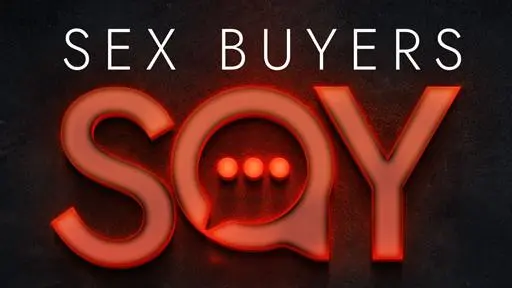This blog is part of a series. Read the rest of the series here:
- Ending Sex Trafficking by Combatting Sex Buying: New Research + Symposium
- Unmasking the Shadows: Identity Disclosure as a Tactic to Deter Sex Buyers
Steve Woodson was a sex buyer. One day, after meeting a prostituted woman, he held a knife against her and forced her to perform a sex act on him that they had not agreed to. Woodson then stole the woman’s money and left.
The woman reported Woodson to the police. When the police found him, Woodson was charged with felony robbery and involuntary deviant sexual intercourse by forcible compulsion, as well as misdemeanor counts of theft, receiving stolen property, and patronizing a prostituted person.
Woodson’s story highlights two points that are often overlooked. First, sex buyers are often not arrested through targeted sex buyer interventions. Rather, they are arrested for the commission of a different crime and/or as a result of some other scenario that prompted law enforcement investigation. Second, sex buyers are often involved in a long list of criminal conduct that extends well beyond the purchase of sexual access to another person. Dr. Michael Shively and the National Center on Sexual Exploitation discuss such arrests under the category of “Other Sex Buyer Arrests,” in a recently published report funded by the National Institute of Justice (NIJ).
The NIJ-funded study, entitled The National Assessment Of Demand Reduction Efforts, Part II, was published in December 2023 and builds on previous research also funded by the NIJ in 2008 conducted by Dr. Shively and Abt Associates.

The first study, conducted from 2008 to 2012 and entitled A National Overview of Prostitution and Sex Trafficking Demand Reduction Efforts, Final Report, reported on the systematic collection of data regarding law enforcement and community efforts to deter sex buying behavior throughout the United States. These efforts gave rise to the formation of a typology of 12 different methods used by law enforcement and communities to deter people (almost entirely men) from buying sex, or which sanction individuals who solicit sex acts. These tactics are called “demand reduction tactics” because sex buyers constitute the consumer-level demand that fuels the prostitution, and ergo, the sex trafficking marketplace. Information obtained during the initial study was made available on a website called Demand-Forum.org, which in 2020, transitioned to the management of the National Center on Sexual Exploitation.
In the National Assessment of Demand Reduction Efforts, Part II, three new tactics were added to the typology: IT-based tactics, Employment Loss, and Other Sex Buyer Arrests. In this blog, we take a closer look at “Other Sex Buyers Arrests.”
“Other Sex Buyer Arrests” do not include the typical and more common approaches to arrests of sex buyers like web-based stings that use online ads with undercover law enforcement agents posing as prostituted persons. Other Sex Buyer Arrests involve cases where sex buyers have been arrested as the result of investigations or enforcement actions that go beyond targeted sex buyer interventions and may include scenarios like traffic stops, police or witness observations of suspicious activity or lewd conduct, and investigations of other offenses such as domestic violence, robbery, child endangerment, or homicide.

One subcategory of Other Sex Buyer Arrests is violent crimes. Violent crimes include domestic abuse, robberies, drug trafficking, rape, and child sexual abuse. The case of Steve Woodson, highlighted at the beginning of this article, falls under this subcategory.
Another subcategory is disturbances. To give a real-life example: in November 2020, police were called to a room at a hotel in Beachwood, Ohio, where a man and woman were reportedly creating a disturbance. They were still physically fighting when the officers arrived. Police determined that the pair had met in the room to complete acts of prostitution, when a disagreement led to the altercation. The man was charged with assault and soliciting prostitution.
Investigations of suspicious activity also often lead to sex buyer arrests. For example, a 21-year-old man was arrested on a prostitution charge after a police officer approached a vehicle parked at a gas station in North Conway, New Hampshire, in February 2019. The police officer was on patrol and approached the car because the circumstances seemed suspicious. Police said a woman was behind the wheel of a car, and the man was in the passenger seat. An investigation determined their identities and that the pair had previously arranged online to meet and exchange money for sex. The man was arrested for soliciting prostitution, and his identity was publicly disclosed.
Recognition of the many ways sex buyers may be arrested, and of their broad range of criminal conduct provides yet another rationale for seeking to deter sex buyer behavior. For more on why and how to combat sex buying, see our fact sheet Why Sex Buyers Must be Stopped and How To Do It.
To learn more about Other Sex Buyer Arrests and other demand reduction tactics, download The National Assessment Of Demand Reduction Efforts, Part II and visit DemandForum.org.




